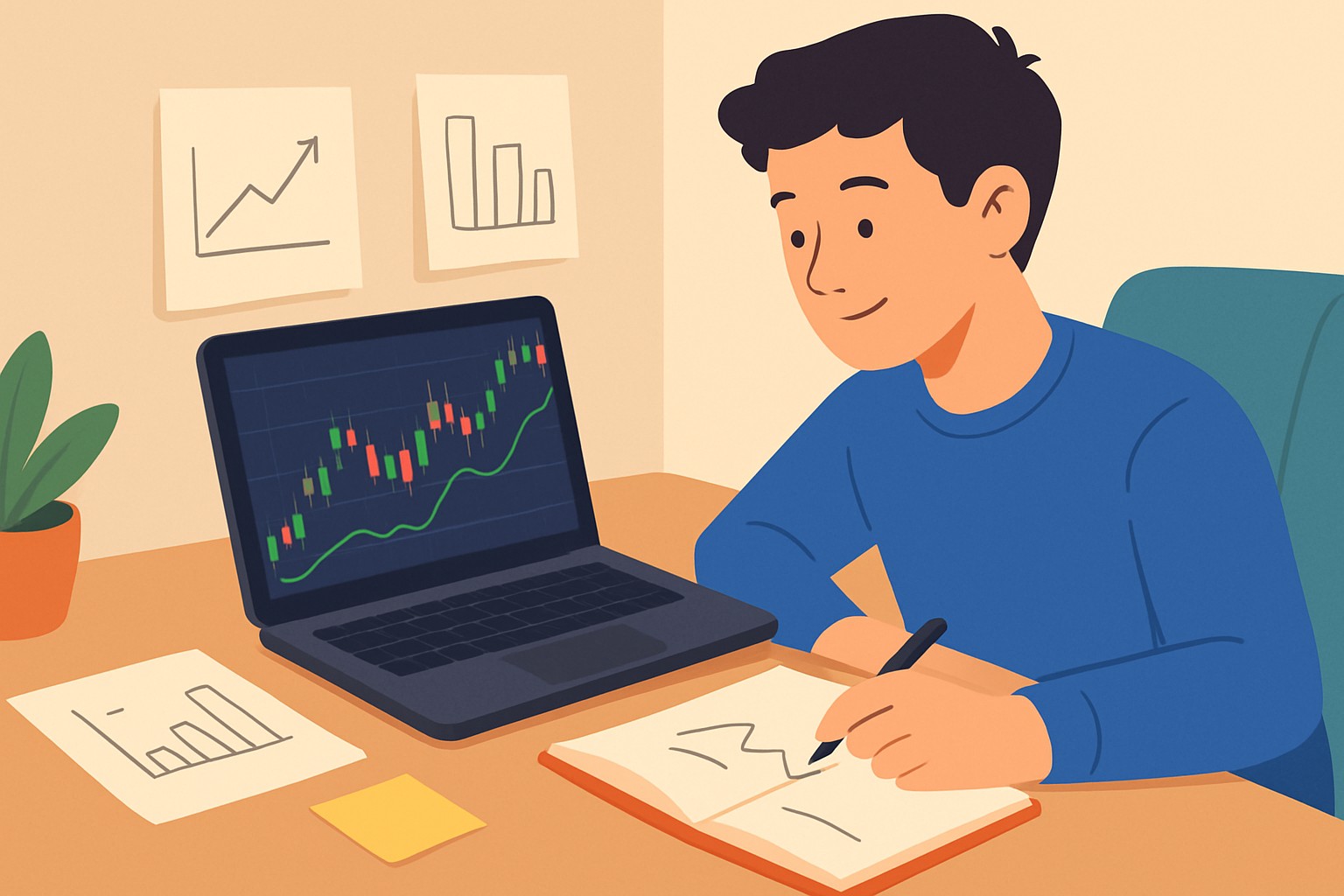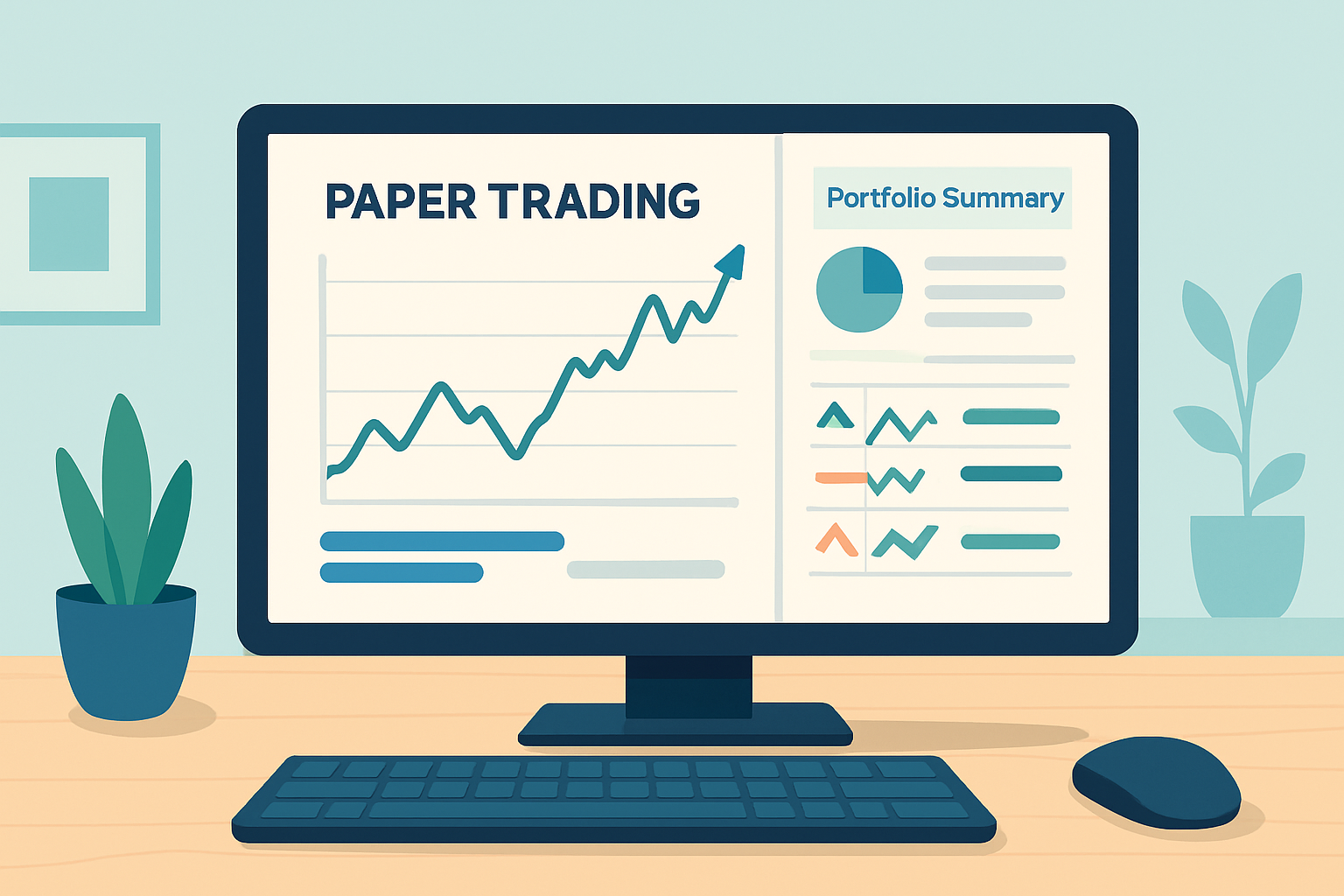Paper Trading Basics for New Investors Without Risk

Paper trading gives new investors a worry-free playground to test out their stock market moves and build confidence. It helps them fine-tune their skills before diving into the real money pool.
What Does Paper Trading Mean? Let us Dive In
Paper trading is like dipping your toes into the stock market pool without getting soaked—it uses virtual money to mimic real trades based on actual market data. It gives beginners a friendly playground to practice trading without putting real cash on the line.
- Uses virtual money to simulate trading so you can get your feet wet without risking a dime
- Relies on real market data including live stock prices and volume to keep things close to reality
- Lets users practice buying, selling and managing positions freely without the sting of real losses
- Removes the emotional and financial rollercoaster beginners often face when jumping into real trading
Why Paper Trading Really Clicks for New Investors
Paper trading is a handy first step. It gives you a risk-free playground to get a feel for how the market moves and experiment with your trading strategies. You can tweak your strategies, sharpen your decision-making chops and gradually build the confidence you’ll need before putting real money on the line.
- Discover the ins and outs of trading without the nail-biting fear of losing money
- Gain a solid understanding of how markets shift and react in real time
- Experiment with different trading strategies in a safe space to find your perfect fit
- Build the confidence to make smart, measured decisions when you’re actually trading for real
- Keep an eye on your performance to spot your strengths and figure out where there’s room to grow
Patience and practice often lay the groundwork for successful investing. Think of paper trading as your safety net—it's where you can safely stumble and fumble without losing a dime, helping you sharpen your instincts and make smarter moves when it’s time to dive into the real deal.
A Straightforward, No-Nonsense Guide to Beginning Paper Trading
- Start off by choosing a paper trading platform that feels intuitive and actually suits your style—no need to wrestle with clunky interfaces.
- Set up some initial virtual capital that roughly matches the amount you would realistically want to invest, so it feels close to the real deal.
- Take some time to really get a grip on the basics of how the stock market ticks and the essential trading principles—it pays off.
- Dive in by placing simulated buy and sell orders using real-time market data—it’s like the real thing, but without the sweat.
- Keep a close watch on your trading performance regularly, and don’t be shy about learning from both the wins and the flops.
- Adjust your trading strategies as you go along, based on what your hands-on practice reveals—it's a bit like tuning a guitar until the chords sound just right.
Signing up for popular paper trading platforms is usually a breeze and won’t cost you a dime, making them perfect for those just dipping their toes into trading. It’s smart to choose platforms with user-friendly interfaces and real-time data plus helpful educational resources and mobile access so you can practice on the go. Features like trade analytics and performance tracking are game-changers because they highlight your progress and encourage you to sharpen your skills.
| Platform Name | User-Friendliness | Features for Beginners | Real-Time Data | Mobile Access | Free or Paid |
|---|---|---|---|---|---|
| InvestSim Pro | A breeze to navigate | Comes packed with handy tutorials and thoughtful trade insights | Yes | Yes | Free |
| MarketMock | Reasonably straightforward | Lets you test strategies and set up alerts to keep you in the loop | Yes | No | Free |
| TradingPlayground | Friendly and approachable | Offers smart risk management tools plus built-in journals to track your moves | Yes | Yes | Freemium |
| VirtualTrade Hub | Pretty user-friendly | Encourages community sharing alongside live updates to keep things lively | Yes | Yes | Paid |

Screenshot of a paper trading platform interface showcasing virtual portfolio and live market data
Key Terms Every Beginner Should Know for Paper Trading (Because Let’s Face It, We All Start Somewhere)
Really get the hang of paper trading, it’s a good idea to familiarize yourself with some key trading terms.
- Stocks: Tiny slices of ownership in a company, giving you a real stake in its success.
- Shares: Individual chunks of stock you can actually buy or sell, kind of like trading baseball cards but with companies.
- Bid Price: The highest offer a buyer is ready to put on the table, showing just how much they want in.
- Ask Price: The lowest amount a seller is willing to accept, sometimes a little hopeful but that’s the game.
- Market Order: A straightforward command to buy or sell immediately at the going rate, no time for dithering here.
- Limit Order: A bit more patient, this tells your broker to only buy or sell at a price you’re comfortable with or better—waiting for that sweet spot.
- Portfolio: Your personal mix of investments, kind of like your financial garden that you are growing over time.
- Volatility: The rollercoaster ride of the market—how wildly prices swing up and down, keeping things interesting.
Tips to Get the Most Out of Paper Trading (Because Practice Makes Perfect, or At Least Less Painful)
Really squeeze the most out of paper trading and treat it with the same level of seriousness you would give to real investing—no half-measures here. Keep a careful eye on your trade records. Take time now and then to mull over your decisions. Stick to a trading journal like it’s your best friend and set goals that are ambitious yet within reach.
- Aim to mimic real trading conditions as closely as you can, right down to the timing and types of orders. After all, practice makes perfect or at least better
- Keep your trading activity moderate because going overboard might invite bad habits you don’t want to pick up
- Take a close honest look at any mistakes you make. There’s always a lesson hiding there if you’re willing to find it
- Experiment with a variety of strategies to see which ones really click with your personal style. It’s a bit like dating but for trading plans
- Stick to regular practice sessions to build steady consistency and discipline since in the long run those habits pay off more than any quick wins
Understanding the Limits of Paper Trading and Setting Realistic Expectations—Because Not Everything That Glitters Is Gold
Paper trading is a handy tool for getting your feet wet but it’s a far cry from the real deal since there’s no actual money on the line or the emotions that come with it.
- You do not quite get the gut-wrenching emotional pressure that comes with risking real money and that can sway your decision-making
- Without the sting of actual financial risk, it is easy to take bolder risks that might not hold up in the real world
- Execution speeds can feel quite different from what you experience during neat paper trading simulations
- Sometimes it even fosters habits that would not survive the heat of genuine market stress
When and How to Make the Leap from Paper Trading to Real Trading
You’ll know it’s time to invest real money when you’re consistently raking in profits during simulations and have a good handle on the twists and turns of market risks. You should also have a clear game plan for managing both your trades and those pesky emotions.
- Demonstrate consistent success over a good stretch of time using paper trading—it’s like a dress rehearsal before the big show
- Develop a solid understanding of the market’s twists and turns, along with the risks lurking beneath the surface
- Craft a clear, thoroughly tested trading plan that truly aligns with your own goals and style
- Get emotionally ready to handle both the highs and lows with steady calm—because the rollercoaster ride is real
- Make sure you’ve got enough capital to risk without breaking a sweat or feeling pressured
When you dive into real trading after practicing with paper trading, it's usually smarter to start with small amounts so you're not taking on more risk than you can handle. Keep feeding your brain with fresh knowledge and don't forget—trading is one heck of a learning curve. Think of every trade as a stepping stone to sharpen your strategies and grow as an investor. If you're hungry for more tips and insights you can always learn more about investment education.




